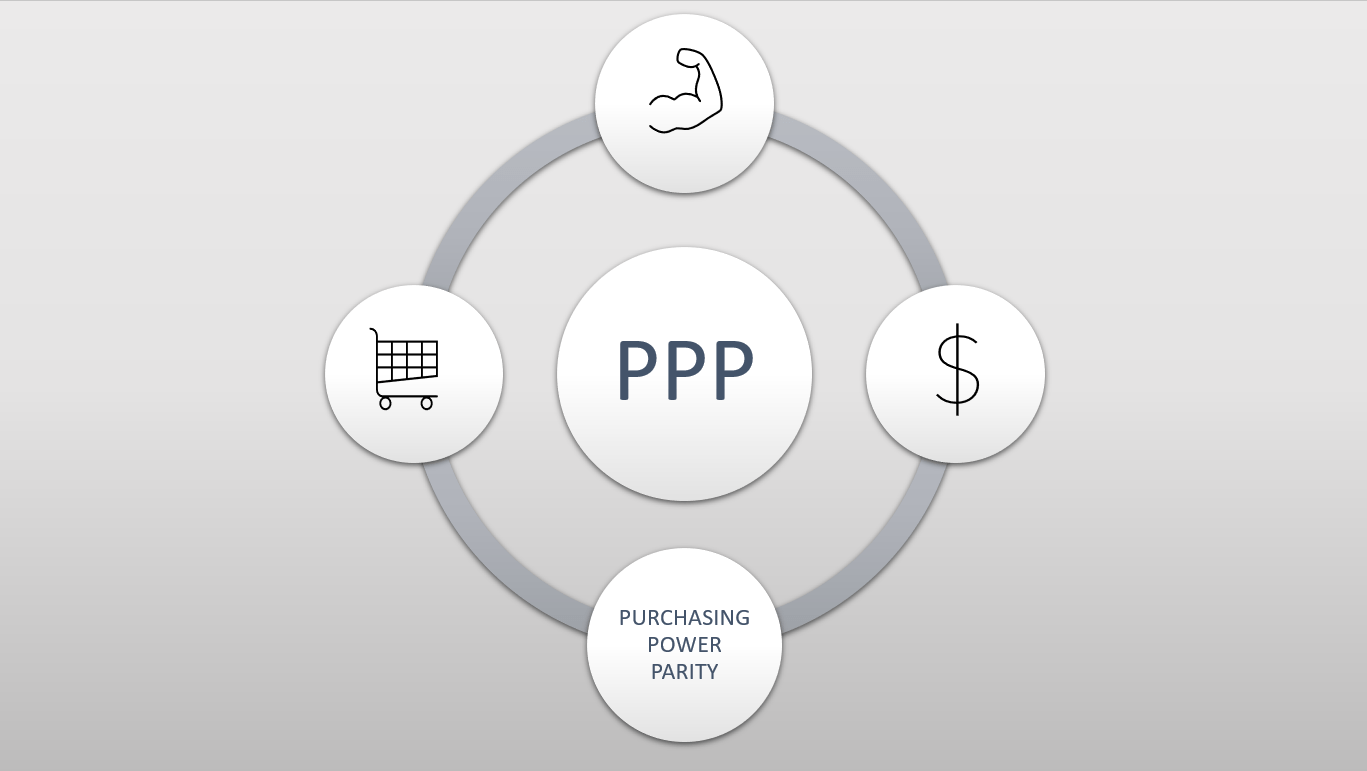The term “Purchasing Power Parity” (PPP) refers to the economic principle according to which, over time, the value of two currencies should equalise in terms of the cost of a basket of goods and services in those two nations. To ensure that the same number of products and services can be purchased in both nations using the same amount of money, the exchange rate between the two currencies should be adjusted.
The concept of PPP has been based on the law of one price, which claims that in a competitive market, the cost of similar products and services should be the same in multiple locations while accounting for exchange rates and transportation expenses.

There are two primary ways to calculate PPP:
Absolute PPP: This approach uses a single currency to compare the costs of a basket of goods and services in multiple nations. For example, if the exact same basket of products and services costs $1000 in the US but €800 in France, the exchange rate should be altered in such a way that $1 is equivalent to €0.80.
Relative PPP: This approach analyses the rates of inflation in two nations, and it assumes that the exchange rate will vary in line to preserve the same relative costs of goods and services. For instance, if the inflation rate in Germany is 1% and 2% in the United States, the exchange rate should be altered to ensure that the cost of the same basket of goods and services is maintained in both nations.
PPP affects foreign trade and investment in several ways, including:
- It may have an impact on international trade in products and services. A country may unfairly benefit from the exchange rate if it does not represent the relative costs of products and services.
- It may affect international payment balances as well. A country may experience a trade imbalance if its currency is overvalued as a result of a high exchange rate, making its exports less competitive and its imports cheaper.
- The computation of the GDP and other economic indices may also be impacted by PPP. Exchange rates that do not accurately represent the relative costs of products and services might result in inflation and economic growth statistics that are erroneous.
In conclusion, PPP acts as a crucial idea in economics and global commerce as it explains how exchange rate fluctuations and its influence on trade and investment flows.

